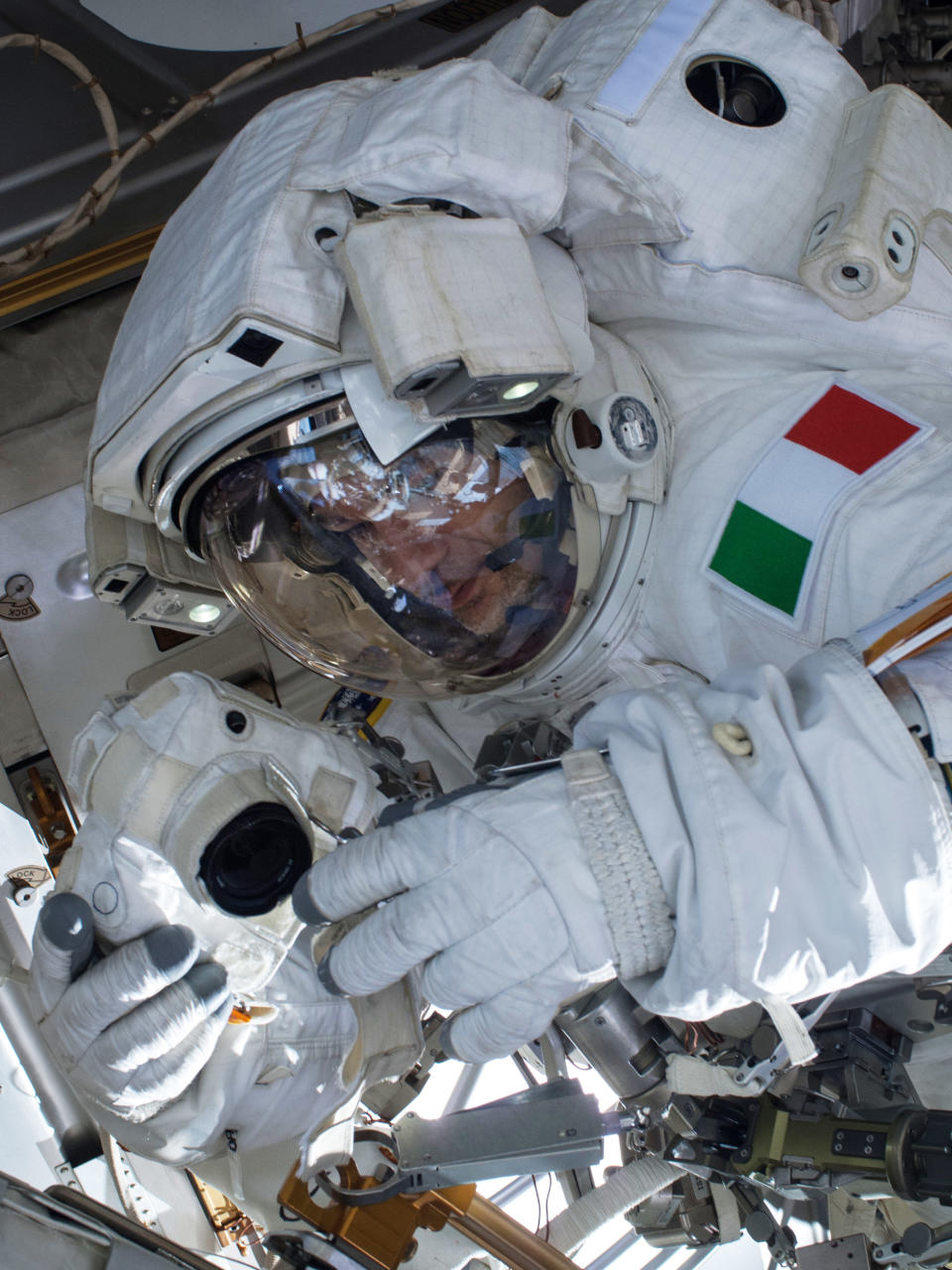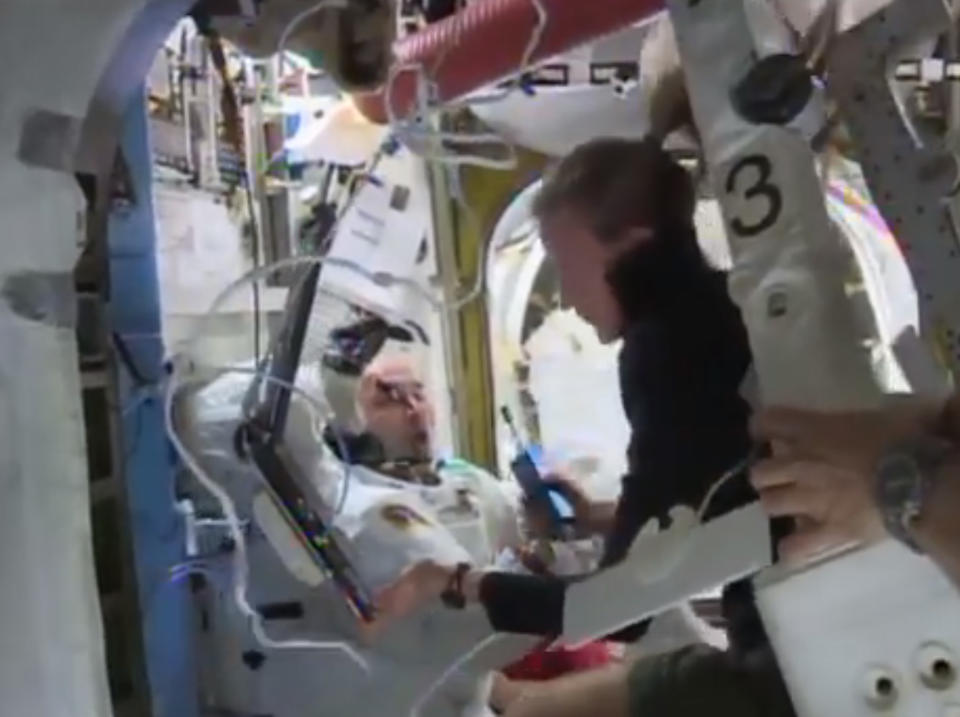NASA could have prevented spacewalker's close call
CAPE CANAVERAL, Fla. (AP) — NASA could have prevented last summer's near-drowning of a spacewalking astronaut at the International Space Station, an investigation panel concluded Wednesday.
Italian astronaut Luca Parmitano's helmet filled with water July 16 during his second spacewalk in a week. He barely made it back inside alive.
But according to the panel's report, his helmet also had leaked at the end of his first spacewalk a week earlier. The panel said the space station team misdiagnosed the first failure and should have delayed the second spacewalk until the problem was understood.
"This event was not properly investigated," said Chris Hansen, NASA's chief space station engineer and chairman of the investigation board created by the space agency after the close call.
"There was a lack of understanding in the severity of the event," Hansen said during a news conference.
Space station officials — even the astronauts themselves — presumed the leak was from a water drink bag in the suit when, in fact, that was not the culprit, he noted.
Investigators said Parmitano's "calm demeanor" during the incident quite possibly saved his life. It was fortunate he was relatively close to the space station entrance when the helmet flooded, Hansen noted.
Now 37, Parmitano is a former test pilot and an officer in the Italian Air Force who was making his first space mission. He returned to Earth in November.
The precise cause of the water leakage is still under review.
Debris clogged a pump mechanism inside Parmitano's spacesuit, part of its cooling system, and water ended up in the helmet, Hansen noted. Engineers do not yet know the source of the aluminum silicate contamination.
NASA almost ended up with another disaster following Parmitano's close call. The day after his near-drowning, the astronauts used a vacuum cleaner to dry the spacesuit and accidentally sucked oxygen out of a tank. "The hazardous mix of electricity and pure O2" could have sparked a fire, the report stated.
Mission Control had aborted the spacewalk once the water began to rise to alarming levels in Parmitano's helmet; the spacewalk by Parmitano and American astronaut Chris Cassidy lasted 1½ hours, versus the anticipated six hours.
So much water filled Parmitano's helmet — an estimated 1½ liters — that he could barely see and could not hear or speak. He said he made his way back into the space station by relying on the position of his safety tether.
NASA was contrite following the release of the 222-page report, saying it could and would do better.
"We're taking it very seriously," said space station program manager Mike Suffredini.
He expects the engineering investigation wraps up by year's end.
Bill Gerstenmaier, head of NASA's human exploration and operations mission, said the spacewalk probably should have ended sooner on July 16.
"We can all improve and do better," Gerstenmaier said.
The spacesuit failure — an unexpected problem initially given short shrift — has overtones of the 1986 Challenger and 2003 Columbia disasters. Both shuttle accidents were caused by misunderstood technical problems and miscommunication. In all, 14 astronauts died.
Gerstenmaier stressed that Parmitano's close call is "an excellent reminder for us."
"The message to all of us is to be really vigilant, right, and to really communicate," he told reporters.
"I think it's a tribute to the agency that we're not hiding this stuff, that we're actually out trying to describe these things, describe where we can get better. That's how we prevent Columbias and Challengers."
A former NASA associate administrator said the incident is an all too familiar problem: Engineers think they know everything that can go wrong with complicated technology and often don't.
"When things go wrong, the machinery is talking to you. The equipment is trying to tell you something," said Scott Pace, space policy director at George Washington University. "The question is whether or not you are listening."
U.S. spacewalks were put on hold after the incident. An exception was made right before Christmas so two U.S. astronauts could repair a crippled cooling system at the orbiting outpost. As a precaution, they had makeshift snorkels and water-absorbent pads in their helmets, but there were no problems.
A series of NASA-led spacewalks tentatively are scheduled for July or August, but the agency wants to know exactly what caused the helmet flooding before carrying them out, Suffredini said. The age of the shuttle-era spacesuits is not thought to be a contributor.
Six men currently reside on the space station: three Russians, two Americans and one Japanese.
___
Science Writer Seth Borenstein in Washington contributed to this report.
___
Online:
NASA: http://www.nasa.gov/mission_pages/station/main/index.html


